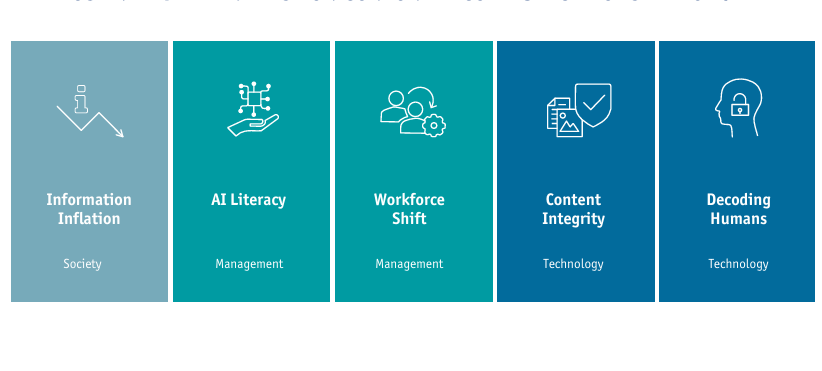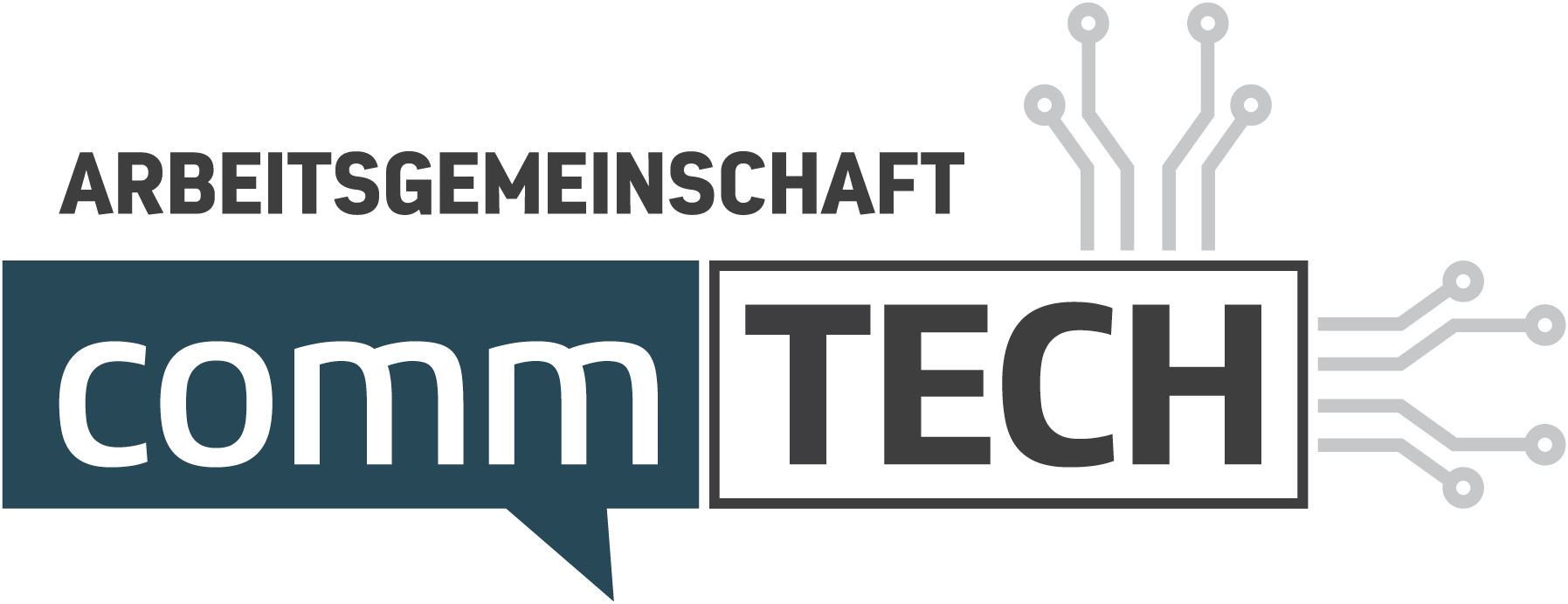- 4. March 2024
- Posted by: Thomas Mickeleit
- Category: NEWS

The future of communication: key findings from the Communications Trend Radar 2024

The recently published Communications Trend Radar 2024 speaks a clear language. The pressure to change due to social developments, changes in the business environment and new technologies is high. Communication managers are not only under pressure to act, but also under time pressure.
What are the key findings from the trend radar?
- Information inflation: The value of information is decreasing. Due to the enormous amount of data and content, communicators need to be more effective in collecting and using relevant information.
- AI literacy: skills in dealing with AI are crucial. Communication professionals need to understand and effectively use AI-based technologies.
- Workforce shift: The labor market is changing. Demographic change and technological progress require an adaptation of work culture and skills.
- Content Integrity: In the face of increasing fake content, communicators must ensure the authenticity and reliability of information.
- Decoding Humans: Technologies that record and interpret physiological and behavioral data are becoming increasingly important. Communicators must monitor these developments and integrate them into their strategies.
Admittedly, decoding humans as the latter trend will not take hold tomorrow, for example in the form of cyborgs, but we can certainly expect the greatest leaps in innovation to occur not in one science, but in the intersection, in this case between information technology, biology and psychology[1].
What is important with this trend, but also with all others, is the following: The effort required to monitor technological developments and their consequences is growing by leaps and bounds as artificial intelligence based on LLMs becomes suitable for everyday use. At the same time, “information inflation” requires comprehensive monitoring of an exponentially growing amount of content on more and more channels. However, according to the CommTech Index Report[2], the current corporate reality is that only 60% of communications departments are aware of the tone of the reporting taking place about them – let alone that this information is available in real time or captures key business figures.
Monitoring the environment as a whole (beyond media monitoring) is also becoming more important because the technologies themselves are developing so rapidly. A year ago, we were amazed at how ChatGPT used prompts to produce texts that were fit for purpose. A few months later, we are now fascinated (or optionally unsettled) by the results of multi-modeling such as SORE, an OpenAI application that generates (almost) studio-quality videos based on text prompts. GPTs from the OpenAI Marketplace offer specific applications – including for communication – that map prompting in the background. The website www.thereisanIAforthat.com continuously lists new AI-based applications – including for communication, where new tools are listed at high frequency. Staying on the ball here is one of the challenges facing communications departments.
In addition, the new technologies leave deep traces in life situations that communication managers have to deal with. If our target groups – as described in the “information inflation” trend – deliberately avoid receiving information, keyword “information overflow”, this behavior will shake the business model of traditional PR. New dialogue platforms and an approach that incorporates contexts and is hyper-personalized are required to continue communicating successfully. Content integrity is about ensuring the authenticity and reliability of information at all times and immediately recognizing and reacting to any misuse. This is where time pressure comes into play: scenarios that require this are not dreams of the future, but a real threat. The prerequisite is undoubtedly to develop AI literacy, which is honestly not just about artificial intelligence, but about digitalization and the technology stack of corporate communications as a whole.
So what do communications managers need to do?
- Prioritize relevant content: In the face of information overload, it is important to deliver content that is meaningful and relevant to the audience. This requires an in-depth understanding of the attitudes and media usage patterns of the target groups.
- Establish strategy-oriented, real-time corporate listening and monitoring: Targeted use of data sources is required to efficiently filter and utilize relevant information and to act as an early warning source for management.
- Use authentication technologies for your own content: To ensure the trustworthiness of the content, communication managers should use technologies that can confirm the authenticity of the content, such as C2PA standards.
- Develop crisis response plans for various threat scenarios: This includes strategies for the rapid correction of misinformation and preventive warnings of fake content.
- Follow the neurotechnology debate: Communicators should explore new ways to measure and evaluate the effectiveness of communication activities, such as the use of biometric wearables and non-invasive brain-computer interfaces.
The Communications Trend Radar is a valuable resource for all communications managers who want to future-proof their organization. It can be downloaded here free of charge: https://www.akademischegesellschaft.com/publikation/communications-trend-radar-2024/
[1] Okamura, K. Interdisciplinarity revisited: evidence for research impact and dynamism. Palgrave Commun 5, 141 (2019). https://doi.org/10.1057/s41599-019-0352-4
[2] CommTech Index Report 2023, AG CommTech and DPRG 2023. www.agcommtech.de

